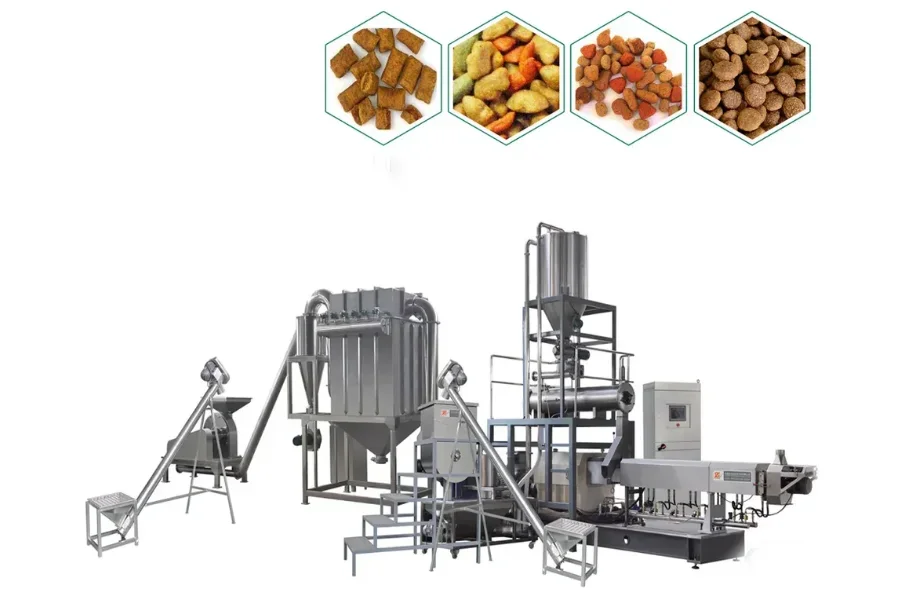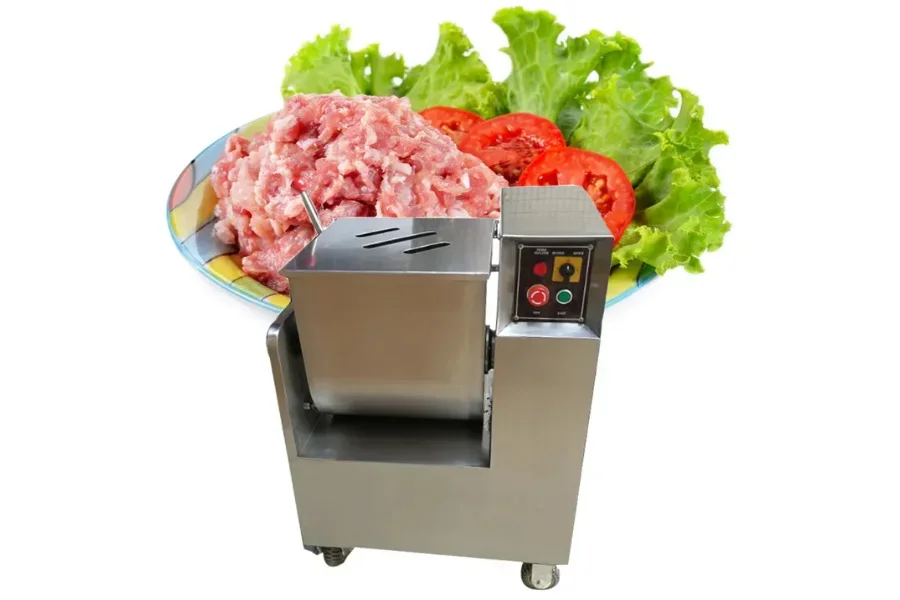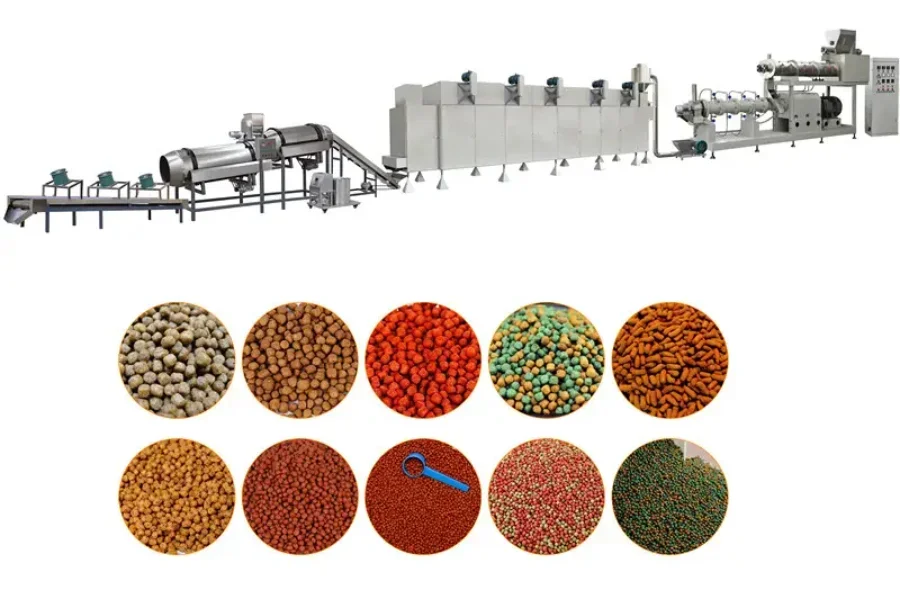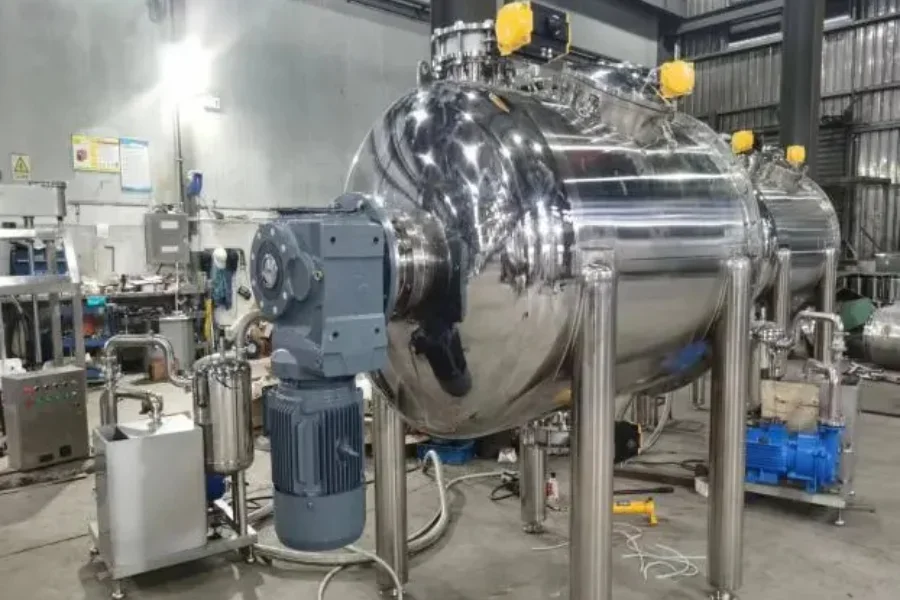Pet food is made by mixing many different ingredients, like vegetables and meat. The equipment responsible for mixing these ingredients are pet food processing machines available in various types from different manufacturers. It is essential to use suitable pet food processing machines, which is why buyers must be cautious when buying them.
This article will discuss the different types of pet food processing machines available and how to select the perfect ones. The market share and size of the pet food processing market will also be discussed.
Table of Contents
Market share of the pet food processing market
Types of pet food processing machines
How to select the perfect pet food processing machines
Summary
Market share of the pet food processing market

In recent years, the pet food processing machines market has seen a significant increase in demand. The need for high-quality and nutritious pet foods is the main cause of the rise in demand.
As of 2019, the global pet food processing market size was estimated at USD 4.62 billion, according to Grand View Research. The figure is expected to grow at a CAGR of 4.5% from 2020 to 2027. An increase in demand for specialized and premium pet foods products is the leading cause of market growth over the projected period. Regions with the highest demand for pet food processing machines are Asia Pacific, Europe, and North America.
Over the forecasted period, Asia Pacific is expected to exhibit the highest growth in the global market. The main reason for this growth is high urbanization across various economies, including India, China, and Thailand.
Types of pet food processing machines
1. Mixers

Mixers are essential components used in pet food processing to mix ingredients like meat, grains, and vegetables. Mixers come in different types; horizontal, ribbon, and vertical. Horizontal mixers are best for large-scale pet food processing as they are used for high-volume mixing. Vertical mixers, on the other hand, are ideal for small-scale production because they can only mix ingredients in small quantities. Ribbon mixers are the most common pet food processing machines used in the pet food industry. They are more efficient and thorough in their operation compared to vertical and horizontal mixers.
2. Mist coating
To enhance pet foods’ flavor, appearance, and texture, they are coated with a fine mist of liquids like oil. Mist coating machines are the machines used to apply these liquids in pet foods. Mist coating machines evenly distribute the mist and provide precise control over the amount of coating applied to the food.
3. Spray coating

Spray coating machines do the same work as mist coating machines but use a high-pressure spray to apply the coating to pet food. These machines are mostly used in the pet food industry because they are efficient and can also apply precise amounts of coating.
4. Extruders

These pet food processing machines mix and shape the pet food into different shapes and sizes. Extruders work through a process that involves heating and cooling pet food ingredients. Later, the mixture is extruded through a die to form the shape desired. These machines are ideal for producing a wide range of pet food products like dry kibble and moist treats.
5. Track tracing machines
Track tracing machines monitor pet food production and ensure all steps are completed. This equipment uses a barcode system to track the pet food as it moves through the production line, ensuring it meets the required quality standards. Track tracing machines are fundamental in pet food production as they ensure the food is of the right quality and safe.
How to select the perfect pet food processing machines
1. Budget
The cost of the pet food processing machine is an important factor to consider. Since these machines are available in different brands, sizes, and capabilities, their prices differ from USD 1.500 to more than USD 10.000. Apart from the initial cost, it is essential to consider the machine’s long-term costs, such as repairs and maintenance costs.
2. Capacity
The amount of food a pet food processing machine can produce over a given time varies from one machine to another. When buying a pet food processing machine, consider the size of the production facility and the demand for food. Small pet food processing machines have a capacity of hundreds of kilograms per hour, and large machines can produce tonnes per hour. The factors that determine the capacity of the machine to purchase include the size of the machine, design, speed, and also the manufacturer’s needs.
3. Efficiency
How quickly and accurately a pet food processing machine produces pet food is a key factor for consideration. Pet food processing machines need to minimize pet food wastage and maximize production. Additionally, they need to be easy to handle and maintain.
4. Ease of use
Pet food processing machines that are hard to use may slow down the production process and even increase costs. A good machine should be simple and intuitive to operate without needing expert knowledge. Before buying a pet food processing machine, confirm it has clear and concise instructions on how it should be run. The pet food processing machine should also be easy to clean and maintain, as this will ensure it operates effectively.
5. Size
How big a pet food production machine is determines the space it will consume in the production facility. The size varies greatly depending on the type of machine and the production needs of the manufacturer. There are machines that are small and compact and others that are huge and take up a significant amount of space in the facility. Pet food processing machines can range from a hundred square meters to thousands of square meters depending on the pet food produced and the machine’s capacity.
6. Quality
Pet food processing machines should be made from high-quality materials to ensure they will last a long time. Also, they should be tested and certified to meet industry standards. A quality pet food processing machine should last between 5 and 10 years, depending on the frequency of use and the level of maintenance.
Summary
Pet food processing machines are essential for the production of pet food. These machines can range from small, compact units to large-scale production facilities and are designed to produce high-quality pet food quickly and efficiently. When selecting a pet food processing machine, it is vital to consider its costs, capacity, efficiency, ease of use, size, and quality. As an investor looking to venture into the pet food processing machine market, check out Alibaba.com for different types of these machines.



